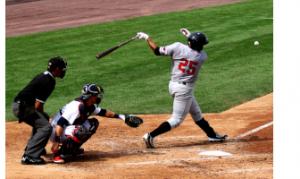Homerun: Testing Building Products with a Baseball Bat
Quality is not an act, it is a habit. Testers don’t like to break things; they like to dispel the illusion that things work. You can see a lot by just looking. These are all proverbs from thinkers, visionaries, and designers about quality. First, solve the problem and then create the product. Let’s review some extreme product testing stories…
Over the past two decades I have heard hilarious, scary, thought-provoking, and unbelievable stories about how manufacturers, architects, and other professionals have tested building products. As Carl Sagan used to say, “Extraordinary claims require extraordinary evidence.” The majority of building product manufacturers are honest, hard-working people who do everything they can to make a great product. However, occasionally you get a bad apple in every industry and the results can make for great entertainment, or in some cases lawsuit city.
Fifteen years ago, I was working in the Texas Gulf Coast region making specification calls for several building product manufacturers. I was representing an EIFS product line and made a visit to an architect who specialized in school projects. He nearly threw me out of his office when I discussed EIFS systems. Why? He had designed a school a few years earlier and was nearly run out of town when holes started appearing in the columns, walls, and nearly every exterior surface of the building.
In this case, the product testing was done by a bunch of school kids. The students found out that the EIFS surfaces could be punctured by kicking a soccer ball into the walls. The columns could be penetrated by pencils, pens, and swift kicks. After a year, the surface of the building looked like Swiss cheese. The school was pissed off and the architect got an earful. Was the architect to blame for specifying a product that might not be conducive to kids thinking they’re Bruce Lee by kicking in the walls? Or was the product manufacturer to blame for selling the architect a system prone to fail for this application?
Recently, a client told me a funny story about how his product was specified. Initially, the school architect specified my client’s competitor for restroom hand dryers. My client makes a metal hand dryer built like a World War II tank. The competitor makes a good product, but it’s made from plastic. The competitor’s product was specified based on long term maintenance considerations even though it was significantly more expensive.
My client gets a call weeks later that the school can’t afford their original choice, the plastic hand dryers, and they want to now review my client’s stout alternative. They meet in a conference room and the school architect asks a few questions and eventually seems swayed by my client’s superior product. However, he is still concerned with long term maintenance and performance. My client tells him he could hit the metal hand dryer with a baseball bat and it would still work. You better walk the talk…
Unfortunately, no baseball bat was found in the building (OK, my blog title could be accused of false advertising or high expectations), but an alternative product testing was conducted. The metal hand dryer and plastic hand dryer were lined up in the room. The architect then proceeded to jump and stomp on both products to test how kids may abuse such a product over time. Needless to say, the plastic hand dryer failed miserably, and the World War II tank hand dryer won the day.
What stories have you heard about extreme product testing? What is the funniest product fail story you can recall?
For more information or to discuss the topic of this blog, please contact Brad Blank





